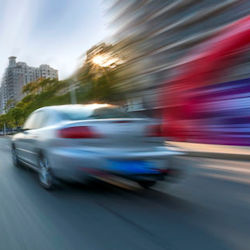Speeding
According to the NHTSA, speeding is the most common unsafe driving practice and is involved in about 29% of all motor vehicle fatalities.
We all know the frustrations of modern life and juggling a busy schedule, but speed limits are put in place to protect all road users. Learn about the dangers of speeding and why faster doesn't mean safer.
Speeding also affects your safety when driving at the speed limit but too fast for road conditions. This is true especially in bad weather, when a road is under repair, or in an area at night that isn't well lit.
Speeding endangers the speeder's life and all of the people on the road around them. It is a problem we all need to help solve. NHTSA provides guides and toolkits to help spread the message about safe driving, including tips on what you can do if you encounter an aggressive driver on the road.
Consequences
Speeding is more than just breaking the law. The consequences are far-ranging.
- Greater potential for loss of vehicle control
- Reduced effectiveness of occupant protection equipment
- Increased stopping distance after the driver perceives a danger
- Increased degree of crash severity leading to more severe injuries
- Economic implications of a speed-related crash
- Increased fuel consumption/cost
Aggressive Driving
Speeding is a type of aggressive driving behavior. According to estimates by the AAA Foundation's Annual Traffic Safety Culture Index, millions of drivers engaged in angry and aggressive behaviors in the 30 days before the survey.
- switching lanes quickly/or very close behind another car
- making rude gestures or honking at other drivers
- driving 15 mph or more over the speed limit on a freeway
- driving through a red light
- passing in front of a vehicle at less than a car length
- speeding up when another vehicle tries to overtake you
- following a vehicle closely to prevent other vehicles from merging
- merging into traffic even when another driver tries to close the gap between vehicles
Click the button to see the various factors that have contributed to an overall rise in aggressive driving.
- Traffic congestion: Traffic congestion contributes to aggressive driving, including speeding, changing lanes frequently, or becoming angry at anyone they believe impedes their progress.
- Running Late: Some people aggressively drive because they have too much to do and are "running late" for work, school, next meeting, or other appointments.
- Anonymity: A motor vehicle insulates the driver from the world. The driver becomes an observer of their surroundings rather than a participant. This can lead to some people feeling less constrained in their behavior.
- Disregard for Others and for the Law: Speeding and changing lanes abruptly might occur in response to specific situations. There is more rude and outrageous behavior on the road than in the past because more drivers drive more miles on the same roads than ever before.
Knowledge Check Choose the best answer for the question.
1-2. What causes most vehicle-related fatalities?
You forgot to answer the question!

